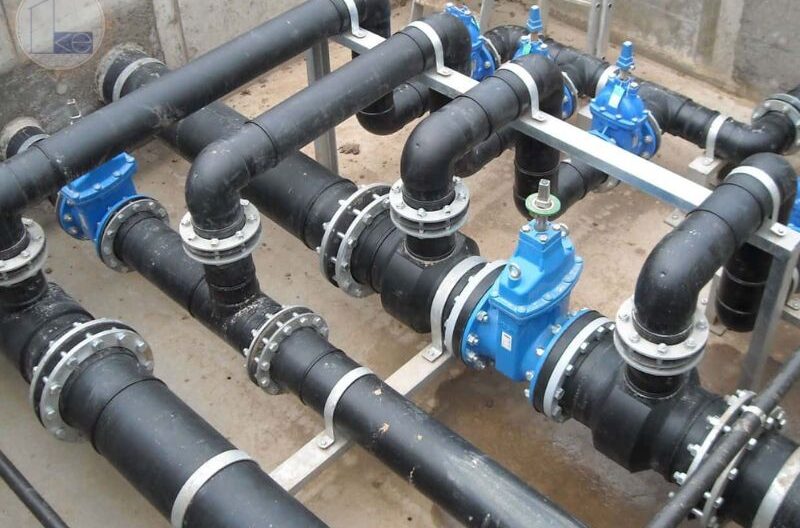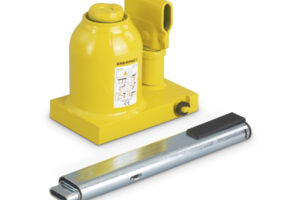
Civil work in Singapore involves complex coordination, strict regulations, and tight space management. Whether building infrastructure, upgrading utilities, or laying out a chilled water piping system, engineers, and contractors face unique challenges. These issues delay progress, raise costs, and sometimes cause safety concerns. Understanding them early helps planners avoid disruption and complete projects efficiently.
Singapore’s dense layout adds another layer of difficulty. Construction sites often sit next to operational facilities, schools, or roads. Any mistake has a real impact. With careful planning and smart design, though, each problem has a workable solution. Let’s explore six common hurdles in civil work and how to handle them effectively.
1. Limited Space in Urban Sites
Singapore’s cityscape leaves little room for error. Civil projects often squeeze into tight corridors between buildings or beneath roads. Workers share space with vehicles, residents, and other services. Staging materials, moving equipment, and keeping access clear all require detailed coordination.
This lack of space affects work pace and crew safety. Delays pile up when teams can’t move or store materials freely. It also limits options for heavy machinery or staging areas. In tight spaces, safety becomes a major concern due to limited room for emergency exits and evacuation paths.
How to Overcome It:
- Use modular elements: Prefabricated components arrive ready to install, saving time on site.
- Plan night work: Shifting activity to off-peak hours frees space and lowers public disruption.
- Map zones: Divide the site into activity zones to control movement and avoid overlap.
Site layout planning should happen early in design. Use building models and surveys to simulate conditions before work begins. With early prep, space stops being a barrier and starts serving the project.
2. Labour Shortage and Workforce Challenges
The local construction industry faces a constant shortage of skilled labour. Tight quotas on foreign workers and rising wages put strain on project budgets and timelines. Training takes time, and turnover rates remain high in many trades.
This hits hardest during peak phases, when formwork, piping, or finishing crews must overlap. Any missing skill can halt progress. Worker fatigue and low morale can also reduce overall site productivity and safety awareness.
How to Overcome It:
- Upskill early: Train workers before project launch to reduce dependence on outside hiring.
- Cross-train crews: Staff with varied skills adapt better and fill gaps quickly.
- Use automation: Where possible, replace repetitive tasks with machines, like concrete mixers or lifting tools.
Strong leadership and fair scheduling also help retain skilled hands. When workers feel valued, they stay longer and deliver better results. Consider feedback channels so site teams can express concerns or suggest improvements.
3. Delays in Regulatory Approvals
Singapore maintains high construction standards. Projects must pass checks from multiple agencies, land, environment, safety, and utilities. These reviews take time. Missing documents or unclear plans cause further delays.
Delays in approval stall procurement, site access, and budgeting. They also affect third-party services like power or telecommunication providers. Worse, restarting rejected plans often requires large redesigns. Repeated delays can erode stakeholder confidence and extend the project lifecycle.
How to Overcome It:
- Involve consultants early: Engage experts who know local codes to pre-check plans.
- Submit in stages: Break large packages into smaller approvals to gain partial clearance faster.
- Track timelines: Assign a team to follow each submission and follow up regularly.
Communication helps. Visit agencies directly when needed. Build good relationships. Review timelines weekly to ensure approvals align with project phases. Keep a log of every interaction to speed up troubleshooting and avoid miscommunication.
4. Complexity of Underground Services
Singapore’s underground network includes power, water, gas, fibre, and drainage. Many sites hold old, unmapped lines that surprise workers during excavation. Striking a line risks injury, legal claims, or service loss.
Complex systems like a chilled water piping system often require trenching or tunnelling. Any error here leads to rework or redesign. Unexpected depth, slope, or interference adds layers of challenge. Sometimes, the presence of asbestos or abandoned structures may further delay excavation.
How to Overcome It:
- Perform ground scans: Use radar and borehole tests to locate buried services before digging.
- Consult record plans: Review utility drawings and past project reports to build a full picture.
- Plan routing in 3D: Use software to test layout options before cutting the earth.
During work, post markers and barriers. Limit access to open trenches. Document every discovery and update the model for future use. Build time buffers into the excavation schedule to account for unforeseen obstacles.
5. Environmental Restrictions
Singapore protects its natural spaces. Civil works near parks, drains, or heritage buildings face stricter rules. Noise, dust, and vibration must stay below set levels. Heavy rain also limits soil work during certain months.
Construction teams must work fast but stay within these bounds. Breaking rules results in fines, delays, or public backlash. Even small actions, like blocking a drain, trigger penalties. In conservation zones, extra checks and permits may be required before work starts.
How to Overcome It:
- Use low-impact tools: Machines with smaller footprints or electric motors reduce emissions.
- Install protection: Dust nets, sound barriers, and vibration sensors reduce the effect on surroundings.
- Build in buffer time: Expect rain or checks to pause work, and plan schedules accordingly.
Keeping a site tidy helps as well. Cover soil, remove waste fast, and post notices early. Residents appreciate clean, quiet work zones. In sensitive areas, update the public regularly to reduce concerns.
6. System Coordination and Clash Management
Civil work rarely stands alone. Mechanical, electrical, and plumbing systems all run through the same space. Each must fit without crossing or blocking another. Coordination failures cause delays, waste, and redesigns.
Installing a chilled water piping system, for instance, requires precise alignment with floor levels, equipment, and other ducts. A wrong bend or misaligned bracket means removing part of a wall or slab. Unchecked clashes with other trades may halt progress mid-installation.
These mistakes often stem from poor drawing reviews or changes made without notice.
How to Overcome It:
- Hold coordination meetings: Weekly checks between disciplines help catch conflicts early.
- Use clash detection tools: Software scans 3D models for overlaps or missing clearance.
- Confirm on-site fit: Test-run tricky parts before permanent work begins.
Once work starts, stick to the plan. Record every change and recheck the new layout against the rest. Coordination builds trust and keeps teams moving together. Avoid last-minute layout changes unless necessary.
Common Issues and Their Fixes at a Glance
To support planning and issue tracking, here’s a summary table of common challenges and suggested approaches.
| Challenge | Risk If Ignored | Action Plan |
| Limited Space | Blocked work, safety issues | Modular design, staged zones, night shifts |
| Labour Shortage | Slow progress, quality dips | Upskilling, flexible roles, automation |
| Regulatory Delays | Timeline slips, cost increase | Staged submissions, expert review, follow-up |
| Underground Conflicts | Pipe damage, work stoppage | Ground scans, 3D route plans, onsite updates |
| Environmental Limits | Penalties, bad public response | Noise control, rain planning, protective barriers |
| System Coordination | Redesign, extra cost, clashes | Weekly reviews, clash tools, as-built records |
This summary helps stakeholders align their focus and stay ahead of issues.
Tips to Stay Ahead
Civil work brings pressure. But planning removes much of the strain. Here are key habits that keep jobs smooth:
- Start with full documentation: Site surveys, service maps, and soil tests all guide smart choices.
- Meet weekly: Bring contractors, engineers, and managers together regularly.
- Set milestones: Track each phase and act early when delays arise.
- Keep one log: Record every drawing, note, or site change in one place for clarity.
- Respect your crew: Safe, supported workers perform better and help solve problems.
- Monitor weather closely: Use forecasts to adjust work plans before rain or wind disrupts schedules.
Final Thoughts
Singapore’s civil work projects carry high stakes. One delay can ripple across months. A single mistake can undo weeks of work. From the constraints of space to the careful routing of a chilled water piping system, every phase demands attention.
The good news? These challenges can be managed. With teamwork, planning, and the right tools, contractors and engineers deliver safe, clean, and timely projects. As Singapore continues to grow, building smarter means not just solving problems, but preventing them.




